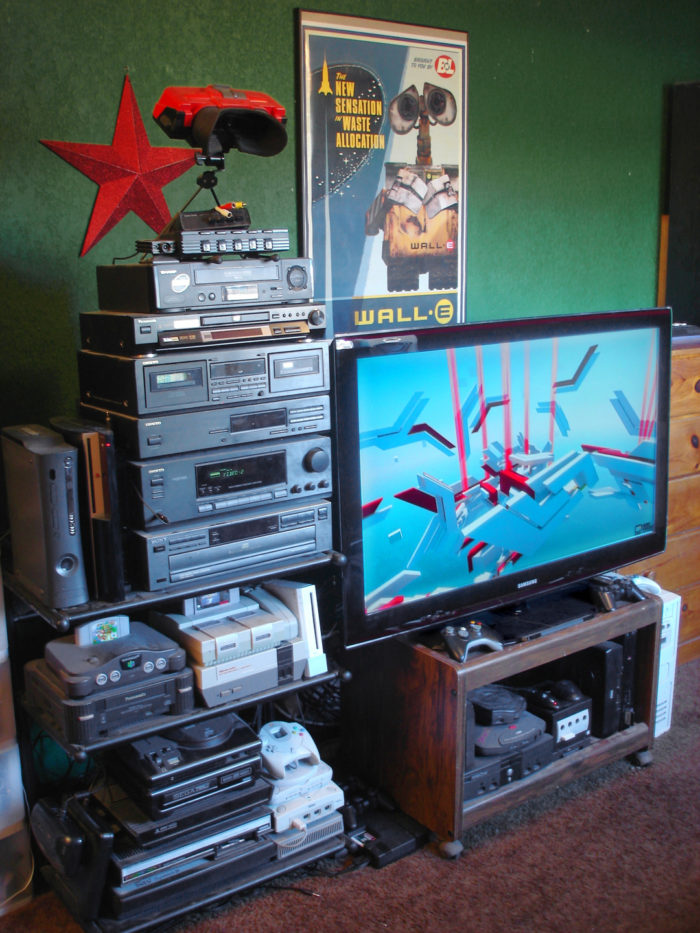
Image Credit: Kevin Simpson / Creative Commons license / Flickr
Now that the gift-giving holidays are nearly in the rearview mirror and bill-paying season is just ahead, it’s a good time to remind you that those electronic devices given or received need not result in higher electric bills.
There are ways to keep your energy use under control without always visiting your brother-in-law’s house to borrow a little electricity. In fact, many electronics manufacturers today offer settings that fine-tune the efficiency of their gadgetry — and usually those settings are pretty easy to manipulate.
The best news is that if you and everyone else took a few seconds to reset those default settings, our power plants wouldn’t need to produce so much electricity, meaning they’d also generate less pollution. Even before the 2015 holiday rush there were an estimated 3.8 billion electronic devices installed in our homes at a cost of about $22 billion annually. Making sure those electronics are set to their most efficient levels helps everyone.
New computer?
Make sure the power settings (“Power options” in the Start menu on Windows, “System Preferences” on a Mac) are set to “energy saver”; otherwise your computer will continue to guzzle electricity when you are not using it.
Beware of the screen saver: the days of CRT screens that needed a screensaver to avoid “burn-in” discoloration are long gone. Now, screensavers are misnomers — they don’t save anything but they do increase your utility bill. Disable the screensaver and set your computer’s display to switch off after 5 or 10 minutes of inactivity and to go to sleep after 20 or 30 minutes instead. The computer will still come back to life pretty quickly at the touch of a key, and you’ll save energy.
New television?
The bad news is that a larger screen and sharper picture won’t improve the quality of TV shows or the score of the game you’re watching. The good news is that TVs are, in fact, much more energy-efficient than the ones that came out even five years ago. Hopefully, you received one with a top Energy Star rating, indicating it’s among the most energy efficient. But the next step is to make it suitable for viewing at home. What do we mean by that? When setting up your TV, select the “home” or “standard” mode. If you pick “vivid” or “retail,” the TV will be overly bright and consume more power.
Most new televisions are “smart TVs,” meaning they can be connected directly to the Internet and you can stream shows from services like Netflix directly without the need for another device. While most of the newest smart TVs are able to boot up within 10 seconds and only use 0.5 watt or less of power while in standby, some models take a little longer and have a setting called “quick start” that in some cases will use 10 watts to as much as 30 watts. While the TV will start a little faster, this is quite a high price to pay. We recommend consumers disable the quick start or “instant on” type function unless you absolutely can’t wait a few extra seconds for your TV to power up.
Most newer TVs also have an “automatic brightness control” (ABC) setting that should be enabled or turned on. The ABC measures the amount of light in a room and adjusts the brightness of the TV accordingly. By allowing the television to regulate its brightness, you can save as much as 50 percent of the energy needed to watch in low-light situations, such as at night.
When you have multiple TVs
If you’ve installed two or three more TVs in your home, be sure to ask your pay TV service provider for a whole-home DVR system that uses one main box for the primary television, but lower-powered energy devices (thin clients) for the other TVs. Make sure each set-top box meets Energy Star Version 4.1 efficiency levels.
Another way to stay off next year’s Naughty List is to save energy by streaming movies from services like Netflix or Amazon Prime directly from your smart TV. If your TV is not Internet-ready or you prefer to use an external device, use small media players from Roku, Chromecast, or Apple TV, which typically consume less than 5 watts. At all cost (and it will be your cost), stay away from accessing movies through game consoles like PlayStation or Xbox. Those devices use 10 to 20 times more energy to show the same film.
And don’t forget to turn off game consoles when you’re done playing. At the very least go to the settings menu and enable “auto power down” that can put the game console to sleep. If you set it to go to sleep after an hour of inactivity, you can save as much as $75 in electricity annually.
Recycle
And finally, properly recycle the old devices that you’ve replaced with new ones. If the old device still works, hand down your telephones, laptops, or tablets to younger family members, or go online and search for buy-back programs.
Also, retailers such as Best Buy and Staples have extensive in-store recycling programs. They’ll accept most electronics products and will recycle them properly for free, regardless of where you bought them. Best Buy even takes old TVs. Amazon.com, on the other hand, has a very limited recycling program and only takes back products they make such as Kindles.
Noah Horowitz is senior scientist and director of the Center for Energy Efficiency with the Natural Resources Defense Council in San Francisco. This post originally was published at NRDC Switchboard.
Weekly Newsletter
Get building science and energy efficiency advice, plus special offers, in your inbox.















0 Comments
Log in or create an account to post a comment.
Sign up Log in